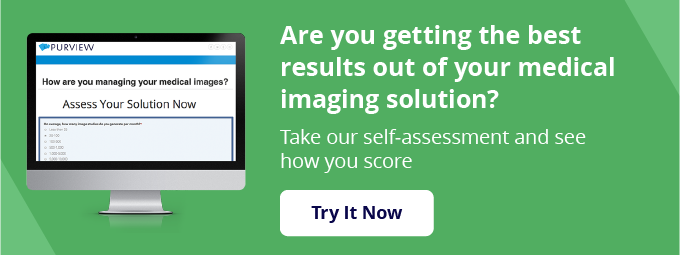Improve Medical Outcomes for Neurology Specialists Through the Cloud


You’re out with your friends, catching up at a nice restaurant. Suddenly you feel your phone vibrate, and as you slip it out of the right hand pocket of your navy blue slacks and bring up the screen, you see the caller id - it's the hospital. You feel a knot in your stomach rise to your throat knowing that the only reason you would be receiving a call is due to a medical emergency, and you happen to be the neurosurgeon on call. You excuse yourself from the table just as your buddy is describing with great enthusiasm how to make authentic italian meatballs. You make your way to a more private location as you answer the call. A 24 year old woman has been in a car crash.
As your resident is informing you of the situation, you access your physician portal from your phone and view the images that were just taken in the ER. You ingest the information as you briskly walk away from the fading laughter. Somehow, moments later, you find yourself driving to the hospital. With the sun setting in your rear view mirror, you shake your head to clear your mind and as you take a deep breath, you begin to formulate a plan. Pieces of a puzzle begin to fall into place as you start drafting your operation. You pull up to the hospital, and see your resident standing at the double doors waiting eagerly. Upon walking in, you are briefed further on the situation.

From the scans taken when she was admitted, you can tell that Sam Doe most probably has kyphosis. You look closer and determine that she has what appears to be a ruptured cyst or tumor along the thoracic spine. During the brief you are told that when the medics brought the woman in, they reported that she was hysterically complaining of numbness and tingling in her lower extremities just before she went unconscious. While your team may have done the best to update you on the information that they had, you still need more definitive answers:
1) What kind of cyst or tumor is this?
2) What is, or rather was her diagnosis and prognosis?
3) What is her treatment plan?
4) What did her anatomy look like before the collision?
-All of these questions, once answered through neuroimaging and medical records, enable the creation of a road map for any surgeon. As you prep for surgery and scrub in, a nurse contacts Sam’s physician's office and has the neuroimaging immediately sent to the Cloud. By the time you get into your OR, you see multiple monitors set up with her before and after images. You are now able to decipher that this indeed is a ruptured congenital spinal epidermoid cyst which could possibly explain symptoms of paraplegia. Hence, you can now proceed to follow the road map you have created with your answers. -Answers which were only possible due to your patient's images being promptly available on the Cloud for you to view and make a diagnostic decision.
Learn More: Why Temporary Cloud Storage Is Perfect for Neurologists
Consider that you didn’t have this access to the Cloud. You would be going in blind. There is no way that you could wait for her files to be hand delivered in the form of a CD. You would effectively cut open this woman not knowing that she has a blood disorder, and cannot be administered over a determined quantity of anesthesia. You wouldn't learn that this indeed is trauma-induced kyphosis and not predating the accident. You would not find out that she has had a heart murmur that you would need to monitor during the surgery. While some of you may find this a tad dramatic, the ugly truth is that until you come face to face with such events, you realize that the more information you have, the better off everyone is.
How SAM Improves Medical Outcomes
More and more neurosurgeons today are uploading their DICOM imaging studies directly into the Cloud via their physician portal. While the workflow and use case of each practice and physician may vary, the benefits of using the Cloud are standard across the board, as such:
SHARING: A Cloud PACS enables neurology specialists the luxury of being able to share neuroimaging, and collaborate live with an expert, from anywhere in the world. So, in the scenario above, you could choose to share the CT and MRI of the thoracic spine with your colleague who is currently vacationing in Fiji. The physician, could instantly pull up the images and inform you of their opinion.
ACCESSIBILITY: With support of Cloud storage, you can answer imperative questions much sooner. You do not have to suffer from lack of information due to not having access to previous medical records. -Isn’t that peace of mind alone worth the transition to the Cloud?
MOBILITY: Imagine how much time was saved in this hypothetical situation by the delivery of HIPAA approved images on your cell phone while you were at dinner. Instead of trying to piece together a jigsaw puzzle and be anxious in anticipation of what the actual condition of the patient is, you instead, were able to proactively begin mapping out your plan of action before you even step foot into the hospital.
To Learn more about transitioning to the Cloud, click here.
Final Thought
With the drawbacks associated with having images delivered via CDs, file sharing applications or email - invest in your practice by considering an option that integrates directly within your website and enables immediate, secure sharing and access of DICOM image files. Time to diagnosis will decrease, saving valuable time time for both you and your patients.



